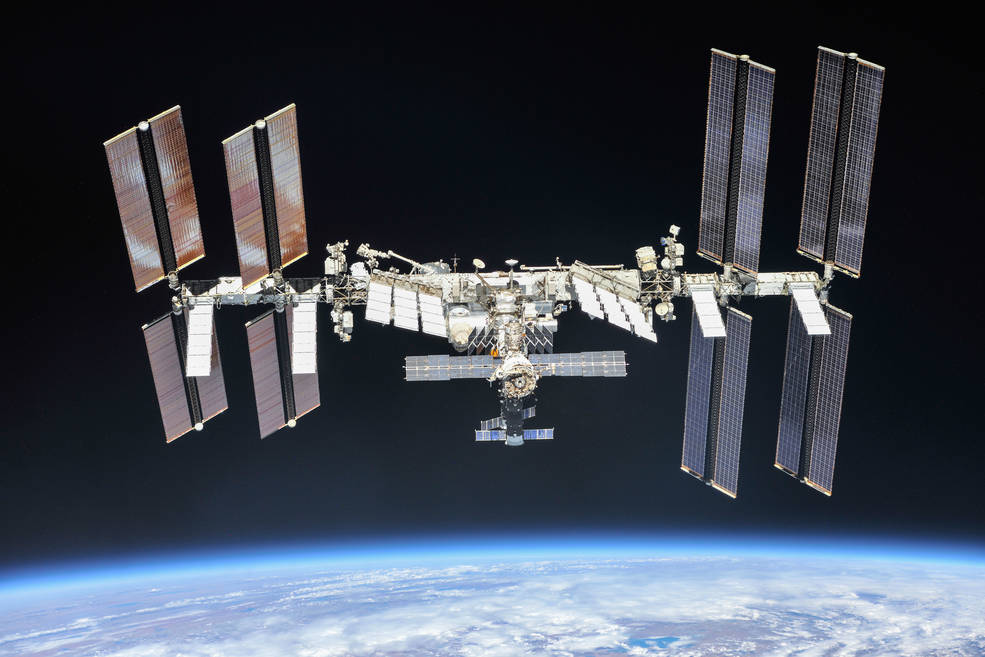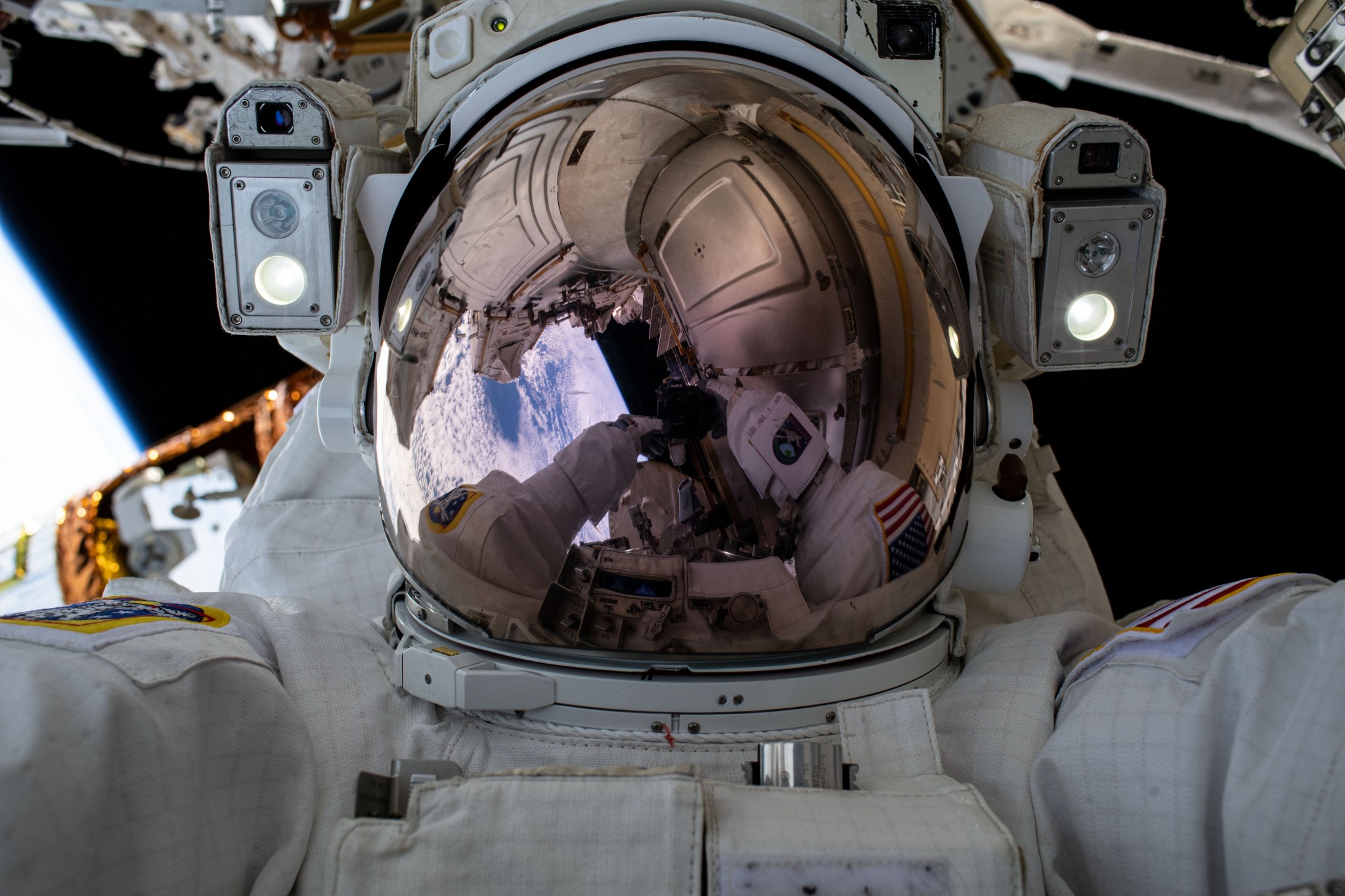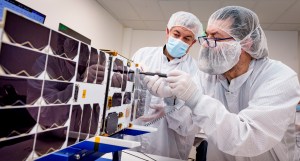The National Aeronautics and Space Act of 1958 calls for NASA to “provide for the widest practicable and appropriate dissemination of information concerning its activities and the results thereof.” Investments in the development of space and aeronautics technology contribute to the creation of new businesses, products, jobs, and industries here on Earth.
From enabling the transfer of ground-breaking images and data from space to the scientific community, to the dissemination of new communications technologies to the public, NASA’s Space Communications and Navigation (SCaN) program, and its predecessors, has made a broad and lasting impact on society.
Technology Spinoffs
From memory foam mattresses to GPS technology in our cars and cellphones, “spinoff” technologies are innovations used in everyday life that have come from technology developed by or for NASA in support of NASA’s missions. SCaN’s research and development of communications and navigation technologies has led to multiple spinoff communications technologies now used outside of NASA, including:
Ground-Based Inflatable Antenna
The Ground-Based Inflatable Antenna from GATR Technologies was originally developed as a solar concentrator for power generation as a technical requirement for SCaN. This technology was licensed exclusively and transferred to GATR Technologies to develop the inflatable antenna and which has been used to support communication efforts in the Haitian earthquake, Hurricane Katrina and Hurricane Ike. This technology has since been featured at the annual NASA Spinoff Day on the Hill on May 20, 2010; NASA’s Spinoff 2010 publication; and won a 2010 R&D 100 award.
Radio Frequency (RF) Micro-Electromechanical Systems (MEMS)
XCOM Wireless Inc., designed lightweight, radio frequency (RF) micro-electromechanical systems (MEMS) that are used to improve satellite communication systems. The RF MEMS have the potential to outperform semiconductor technologies at increased speeds and less power. This technology appeared in NASA’s 2009 Spinoff publication.
Multi-Mode Transceiver
Highlighted in NASA’s 2003 Spinoff publication, General Dynamics Decision Systems’ Multi-Mode Transceiver brings the advantages of SCaN’s Tracking and Data Relay Satellite (TDRS) system to a variety of applications including: university satellite programs, small commercial Earth imaging programs, and Arctic and Antarctic science programs.
Global Positioning System (GPS)
As one of the world leading users of the Global Positioning System (GPS), NASA has many on-going research and development programs that have contributed to the system’s improvement and refinement.
Precision Global Position System Software System
In 1985, NASA’s Jet Propulsion Laboratory (JPL) began developing software to more accurately determine satellite orbits—this led to the development of the Precision Global Position System Software System. The Precision GPS Software System uses special GPS algorithms and the internet to enable real-time positioning anywhere in the world with unprecedented accuracy. The Precision GPS Software System allows scientists to measure and anticipate major global events such as El Niño, potentially diverting billions of dollars in damage and saving lives. The Federal Aviation Administration has since adopted this software into their GPS-based navigation systems, improving air travel safety. This technology was inducted into the Space Technology Hall of Fame in 2004.
Global Differential GPS
JPL’s experience with the Precision GPS Software System led to the development of the Global Differential GPS (GDGPS).
GDGPS has been used to provide high accuracy, real-time, on-board position for testing and calibration of NASA’s airborne synthetic aperture radar “AIR-SAR” mission. A DC-8 “flying laboratory” was used to test new radar systems for weather imaging in difficult areas. GDGPS enables an aircraft to fly multiple passes on a predetermined path with great precision. On the UAV-SAR mission, an unpiloted aerial vehicle equipped with the synthetic aperture radar can detect changes along the route and alert scientists studying earthquakes, volcanoes, and other phenomena in order to mitigate disasters.
Scientists have also been using this data to measure water and ice. This millimeter-level accuracy determines whether or not the ice caps are melting at a faster rate than in previous years or if the ocean buoy detects a sudden surge of water about to hit land.
In addition to tracking weather phenomena, GDGPS has also been used in the agricultural sector for more efficient farming. Farmers can use data to monitor which areas need to be reseeded or if herbicide needs to be sprayed in a certain section instead of the whole crop.

Missions
GPS continues to help lead the way in space-based navigation. GPS has supported and continues to support several missions, including the Space Shuttle Program and the International Space Station.
TOPEX/Poseidon was launched in 1992 to monitor global ocean circulation, improve global climate predications, and track El Niño. JPL developed a GPS Inferred Positioning Systems and Orbit Analysis Simulation Software (GIPSY-OASIS) to pinpoint the spacecraft’s location within two centimeters. It was the first time GPS was used to track a spacecraft. The software has since been licensed to commercial entities such as DigitalGlobe. The technology has been featured in the NASA Spinoff publication in 1999 and 2010.
Launched in 2004, the Gravity Probe-B (GP-B) mission wanted to test Einstein’s theory of relativity. Precise instruments were needed to check the four gyroscopes onboard a satellite orbiting above the Earth’s poles, so researchers at Stanford University designed a high-precision GPS called Carrier-Phase Differential GPS to provide the precision data needed. The researchers realized that controlling the spacecraft was not much different than flying a plane. The technology proved to be successful and was applied to automated agriculture and construction equipment. This story appeared in NASA’s Spinoff publication in 2006 and NASA’s Small Business Innovation Research / Small Business Technology Transfer Hallmarks of Success Videos.
GPS has also helped support international missions. GPS supported the rendezvous of the European Space Agency’s Jules Verne spacecraft in 2008 and a similar vehicle from the Japan Aerospace Exploration Agency.
Small Business Innovation Research
The Small Business Innovation Research (SBIR) Program is a three-phase award system which provides qualified small businesses with opportunities to propose innovative ideas for NASA. It issues annual program solicitations that set forth a substantial number of research and development topics and subtopic areas consistent with NASA needs or missions. SCaN program involvement with the SBIR program has been ongoing since 2005, resulting in a SCaN SBIR Technology Portfolio currently consisting of 88 Phase I and 49 Phase II awards.
To minimize technology duplication and maximize portfolio content, SCaN examines its SBIR Technology Portfolio once a year. With a minimal expenditure of resources and a yearly SBIR Technology Portfolio analysis, SCaN is able to target technology development in high-need areas and adapt to a changing technology landscape in a reasonable timeframe. The SBIR Program provides SCaN a mechanism to develop and assess new technologies targeted towards identified needs which can then be accounted for during annual technology planning sessions.
Spectrum
Today’s spacecraft are increasingly more powerful, complex, and capable of acquiring growing amounts of mission data. As spacecraft have become more complex and sophisticated, two key requirements have not changed: the need to communicate with Earth and to navigate in space. A failure of space communications and navigation systems on the spacecraft or on Earth could result in the complete loss of a mission. NASA’s missions require extensive access to the radio frequency spectrum to support a mission’s communications and navigations requirements. NASA’s use of spectrum has evolved and grown over the decades to include a wide array of programs and applications, and nearly every NASA mission requires assured access to the radio spectrum. The Spectrum Management Division within SCaN manages NASA’s spectrum needs and provides spectrum advocacy on behalf of NASA at the national and international levels.
Earth Science
Earth Science research at NASA has turned space-based observing technology and scientific expertise to the study of our home planet. Earth is an integrated system of land, ocean, atmosphere, ice, and biological processes—from the vantage point of space, we are beginning to understand how these processes work and how they interact.
In order to support the intermediate and long-term goals of understanding Earth, NASA has developed numerous radio sensors designed to fly onboard spacecraft. These sensors may be passive or active in operation, allowing global “pictures” to be taken of Earth on a daily basis in a wide range of frequencies. Passive sensors emit no energy—instead, they measure the natural emissions of Earth’s various features and its atmosphere at specific frequencies in order to provide a description of the planet’s environment. Active sensors are space-borne radars that provide information on the geological structure of Earth and the state of and movement of Earth’s oceans. Data collected by these sensors is transmitted by radio links to facilities on Earth, either directly or through relay satellites.
Space Science
NASA’s Space Science missions are intended to examine the mysteries of the universe from origins to destiny; to explore the solar system; to discover planets around other stars; to search for life beyond Earth; and to chart the evolution of the universe and understand its galaxies, stars, planets, and life.
Space science missions require highly reliable communications, often over long periods of time and great distances. The large distances involved in deep-space research result in a need for high power transmitters and very sensitive receivers at Earth stations that communicate with the spacecraft, factors which must be taken into account in spectrum planning efforts. Because many deep space missions continue for periods of several years, and because there are usually several missions in progress at the same time, there is a corresponding need for communication with several spacecraft at any given time. Coverage of simultaneous missions requires nearly continuous usage of radio frequency bands allocated for space research communication.

Human Space Exploration
NASA seeks to open the space frontier through exploration with the goal of enabling the development of space and expanding the human experience into the far reaches of the solar system. In exploring space, NASA has brought together a wide range of technologies, machines, and people in the development of programs such as the International Space Station; these programs require extremely complex radio systems, which are critical to their operation and currently include frequencies between 100 MHz and 30 GHz.
Aeronautics and Space Technology Development
NASA requires access to the radio spectrum in order to conduct test and development phases of new technology endeavors in aeronautics and space transportation. In many cases, new technological design test-rigs and/or prototypes undergo their various test and validation phases using conventional spectrum allocations for mobile or point-to-point operations.
For links between in-flight aerospace vehicles and ground systems, NASA requires access to aeronautical telemetry frequency allocations. Currently the radio frequency spectrum is used to provide real-time data information from test vehicles to the ground, real-time video of cockpit or project information, and real-time command and control of the vehicle, including flight termination. Telemetry is used for the real-time monitoring of flight research/test parameters that are necessary in order to minimize the risk to the pilot and aircraft during the performance of maneuvers intended to push the flight envelope of flight test vehicles.






































